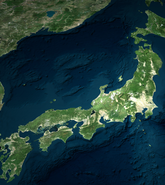Newark, CA – November 16, 2022 - RMS®, a Moody’s Analytics company and a world-leading risk modeling and solutions company, estimates total private market U.S. insured losses from Hurricane Nicole to be less than US$2 billion, with the best estimate of US$1.6 billion. This estimate represents insured losses associated with wind, storm surge, and precipitation-induced flooding.
Total insured loss estimates for Hurricane Nicole (US$ billions):
| |
Wind (incl. coverage leakage) + Surge |
Inland Flood excl. NFIP |
Total excl. NFIP |
Best Estimate |
| Private Market Insured Loss |
1.2 – 1.8 |
< 0.1 |
1.3 – 1.9 |
1.6 |
RMS estimates privately insured wind and storm surge losses of US$1.2 billion to US$1.8 billion from Hurricane Nicole, based on analysis of ensemble footprints in Version 21 of the RMS North Atlantic Hurricane Models. RMS ensemble footprints are reconstructions of Nicole’s hazard that capture the uncertainties surrounding observed winds and storm surge.
RMS modelers developed and validated the wind, storm surge, and inland flood reconstructions and corresponding loss estimates using publicly available observations, including wind stations, river gauge water level data, and web reconnaissance.
Jeff Waters, Staff Product Manager, North Atlantic Hurricane Models, RMS, said: “Even though Hurricane Nicole was much less intense than Hurricane Ian a few weeks prior, it exhibited a large wind field that impacted many of the same areas in Florida. RMS Event Response teams estimate that roughly 98 percent of postal codes in Florida impacted by Nicole were previously impacted by Hurricane Ian. Similar to other overlapping events from previous seasons, such as Hurricanes Ida and Nicholas in 2021, and Laura and Delta in 2020, we expect the overlapping nature of Hurricane Ian and Nicole to introduce significant uncertainties in the loss attribution and claims settlement process.”
Additionally, RMS estimates losses for the National Flood Insurance Program (NFIP) from Nicole to be less than US$300 million, and primarily in Florida and Georgia. These losses were derived using the RMS view of NFIP exposure based on policy-in-force data published by FEMA, the Version 21 RMS North Atlantic Hurricane Models, and the RMS U.S. Inland Flood HD Model.
Losses reflect property damage and business interruption to residential, commercial, industrial, and automobile lines of business, and consider sources of post-event loss amplification (PLA), inflationary trends, and non-modeled sources of loss. RMS expects the majority of wind and storm surge losses to come from Florida, and the majority of the NFIP and insured flood losses to come from both Florida and Georgia.
“Historically, an event of Hurricane Nicole’s magnitude would not exhibit notable PLA impacts if it were to occur on its own. However, the fact that it closely follows a major event with Hurricane Ian, means that the same factors influencing PLA from Ian also apply to Nicole, including shortages of labor, materials, and claims adjusters. This is an example of compounding PLA effects,” said Sarah Hartley, Manager, Event Response, RMS.
Hurricane Nicole was the fourteenth-named storm of the 2022 North Atlantic hurricane season, the eighth hurricane, and the second hurricane to make U.S. landfall this season. Nicole made landfall on November 10, 2022, near Vero Beach, Florida as a Category 1 hurricane on the Saffir-Simpson Hurricane Wind Scale with maximum sustained winds of 75 miles per hour (120 km/h).
The storm brought a combination of strong winds, storm surge, and heavy rainfall to coastal and inland areas of Florida, including many that are still recovering from Hurricane Ian. Hurricane Nicole briefly re-emerged into the Gulf of Mexico as a tropical storm before weakening to a tropical depression and moving back onshore, tracking northward through the southeast U.S., the Carolinas, and mid-Atlantic regions.
Prior to impacting the U.S., Hurricane Nicole hit parts of the Bahamas as both a tropical storm and Category 1 hurricane. However, RMS expected insured losses to be minimal in that region.
There are two weeks left in the 2022 Atlantic Hurricane season, which officially ends on November 30.
RMS industry loss estimates for landfalling hurricanes provide a comprehensive view, reflecting modeled and non-modeled impacts from all major drivers of damage, including wind, storm surge, and inland flooding.
END
The technology and data used in providing this information is based on the scientific data, mathematical and empirical models, and encoded experience of scientists and specialists. As with any model of physical systems, particularly those with low frequencies of occurrence and potentially high severity outcomes, the actual losses from catastrophic events may differ from the results of simulation analyses.
RMS SPECIFICALLY DISCLAIMS ANY AND ALL RESPONSIBILITIES, OBLIGATIONS, AND LIABILITY WITH RESPECT TO ANY DECISIONS OR ADVICE MADE OR GIVEN AS A RESULT OF THIS INFORMATION OR USE THEREOF, INCLUDING ALL WARRANTIES, WHETHER EXPRESS OR IMPLIED, INCLUDING BUT NOT LIMITED TO, WARRANTIES OF NON-INFRINGEMENT, MERCHANTABILITY, AND FITNESS FOR A PARTICULAR PURPOSE. IN NO EVENT SHALL RMS (OR ITS PARENT, SUBSIDIARY, OR OTHER AFFILIATED COMPANIES) BE LIABLE FOR DIRECT, INDIRECT, SPECIAL, INCIDENTAL, OR CONSEQUENTIAL DAMAGES WITH RESPECT TO ANY DECISIONS OR ADVICE MADE OR GIVEN AS A RESULT OF THE CONTENTS OF THIS INFORMATION OR USE THEREOF.





